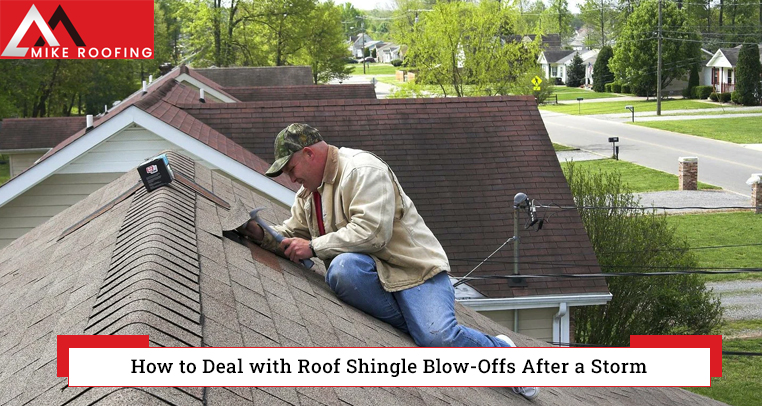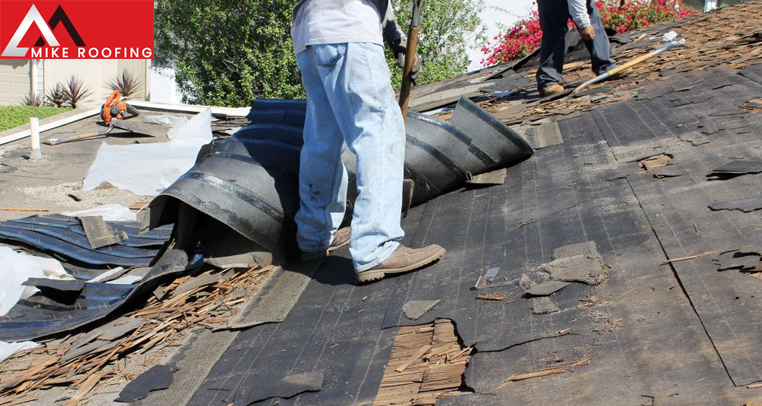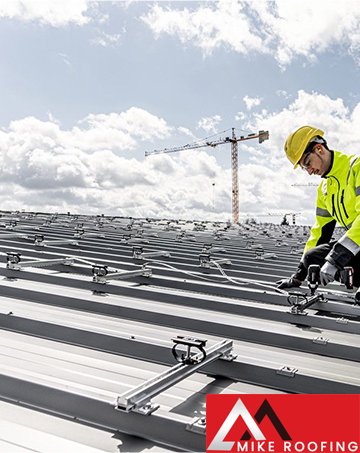How to Deal with Roof Shingle Blow-Offs After a Storm
A big storm can really mess things up, especially your house. One common problem is roof shingles flying off because of strong winds or heavy rain. This is a serious issue because it leaves your roof open to leaks and other damage. Therefore, it’s important to know what to do if you find shingles on the ground after a storm. It is very important to check your roof after any big storm. This will help you find any problems early. Finally, taking quick action can prevent bigger and more expensive repairs later. So, let’s learn about keeping our roofs safe and sound.
Check for Damage Safely
After a storm passes, the first thing you should do is look at your roof. However, don’t climb onto the roof yourself unless you really know what you are doing. It can be very dangerous. Instead, walk around your house and look up. You can use binoculars for a closer look. See if you notice any missing or damaged shingles. Also, look for any other damage, like broken gutters or loose wires.
Furthermore, it’s important to stay safe while checking. Be careful of fallen branches or power lines. Also, watch out for slippery surfaces. You should always prioritize safety. Therefore, if you are unsure, it’s best to call a professional to inspect your roof. They have the right tools and training to do it safely.
Cover Exposed Areas Quickly
If you see missing shingles, you need to cover the exposed areas quickly. This will stop water from getting inside your house. You can use a tarp or plastic sheeting. Secure it with nails or weights. This is a temporary fix. It is not a permanent solution. It is also important to do this safely.
Additionally, you can use plywood to cover larger holes. Cut the plywood to the right size. Then, nail it over the damaged area. This will provide better protection than a tarp. However, this is still a temporary fix. You will need to get your roof properly repaired soon. Also, make sure you are careful when working on a ladder.
Contact Your Insurance Company
Next, you should contact your insurance company. They will help you with the cost of repairs. Take pictures of the damage before you call. This will help with your claim. Also, keep records of any repairs you make. This includes receipts for materials.
Moreover, your insurance company might send an adjuster to look at the damage. The adjuster will assess the damage and give you an estimate for repairs. Finally, it is important to understand your insurance policy. This will help you know what is covered.
Get a Thorough Roof Inspection
Before the repairs start, the contractor should do a thorough roof inspection. This will help them find all the damage. They will also check for other problems, like leaks or rot. This is important because sometimes there is more damage than you can see from the ground.
Additionally, the contractor should give you a detailed estimate for the repairs. This should include the cost of materials and labor. Also, they should explain the repair process to you. Therefore, a thorough inspection is a very important step.

Prevent Future Blow-Offs
Finally, there are things you can do to prevent future shingle blow-offs. Regularly inspect your roof for loose or damaged shingles. Trim trees that hang over your roof. This will prevent branches from falling on your roof during a storm. Also, make sure your roof is properly ventilated.
Furthermore, you can upgrade to stronger shingles. These shingles are designed to withstand high winds. Also, you can install hurricane straps. These straps help secure your roof to your house. Therefore, taking these steps can help protect your roof from future storms.
| Prevention Method | Description |
| Regular roof Inspections | Check your roof regularly for loose or damaged shingles. |
| Tree Trimming | Trim trees that overhang your roof. |
| Proper Ventilation | Ensure your roof has proper ventilation. |
| Stronger Shingles | Upgrade to shingles designed for high winds. |
| Hurricane Straps | Install straps to secure your roof to your house. |


